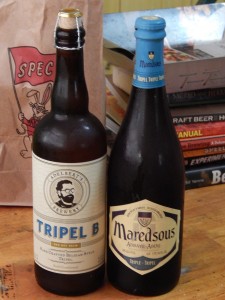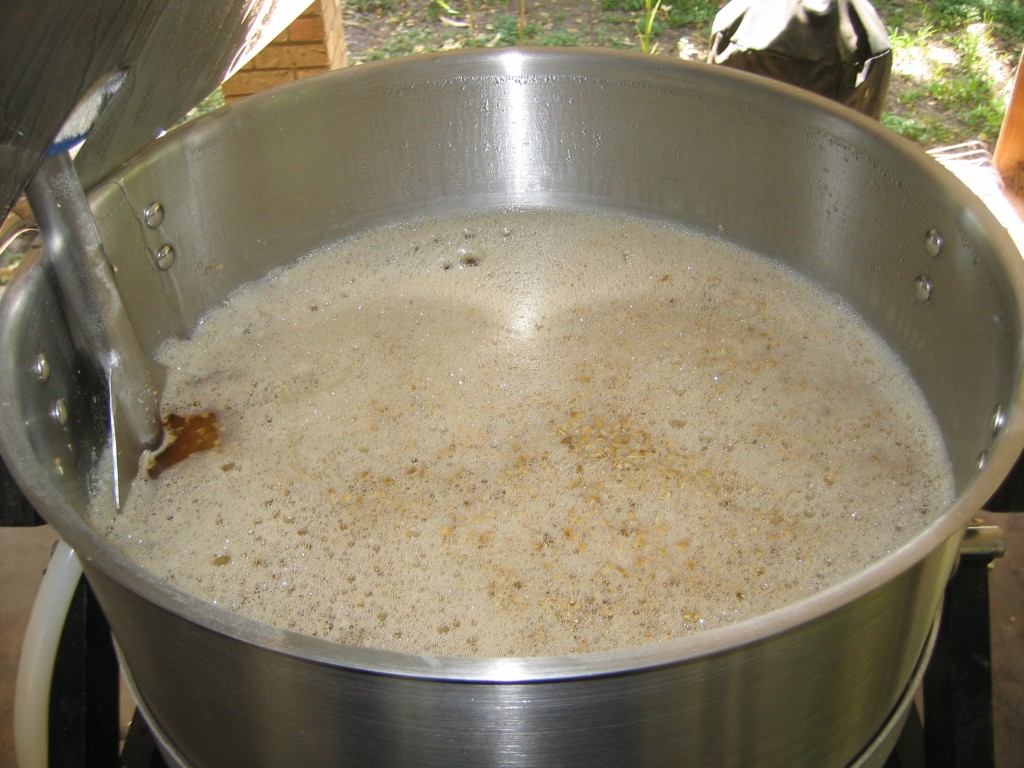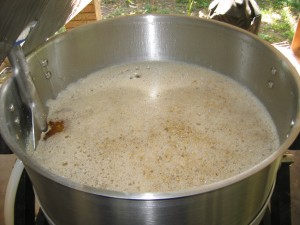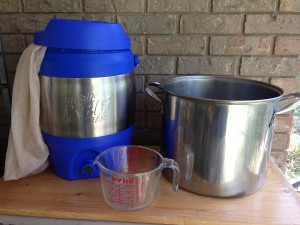 The recipe for a tripel is simple, it’s almost the equivalent of the “recipe” for scrambled eggs. However, as with preparing eggs, success lies in the freshness of the ingredients and in the details of the preparation. When brewing a tripel, your main task on brewday is to make a highly fermentable wort. [Read more…]
The recipe for a tripel is simple, it’s almost the equivalent of the “recipe” for scrambled eggs. However, as with preparing eggs, success lies in the freshness of the ingredients and in the details of the preparation. When brewing a tripel, your main task on brewday is to make a highly fermentable wort. [Read more…]
Tripel (III: Wort Production)
Choosing a Mash Method (I: Single Infusion Mashes)
When brewing an all-grain beer, you need to decide on a mash method. If you are following a recipe, the mash details are likely spelled out for you. However, if you’ve drawn up your own recipe — or are using an existing recipe and want to pick the best mash method for it — you should know how to choose a mash method.
Many homebrewers will choose their mash method based on the style of beer they are brewing — a single infusion mash for an English ale, a decoction mash for a German lager, or one of the slew of different mash methods used in traditional Belgian brewing for brewing a Belgian beer. (You will also need to decide on a lautering method — of which continuous sparging, batch sparging, and the no-sparge, brew-in-a-bag (BIAB) method are three popular choices for homebrewers. But that’s another topic.)
Practical homebrewers should understand that mashing is an extension of malting and the vast majority of malts produced today are intended to be single infusion mashed. These malts are called fully-modified. Unless your malt is labelled otherwise, any base malt you buy is overwhelmingly likely to be fully modified.
All-Grain Brew Day Walkthrough (IV: The Mash)
This is the fourth installment in the All-Grain Brew Day Walkthough, which started with a post on strike water preparation.
This walkthrough is going to focus mostly on the practical. However, at this point, let’s stop and think about what’s going on in the mash. While the mash is progressing, the homebrewer typically does fairly little. He might stir the mash, or his rig may circulate the wort through the grain bed for him, but it’s mostly downtime for the brewer. At the end of the article, I’ll focus on the things you can be doing during the mash, but first, let’s examine what’s happening in the mash tun.
Tannins in the Mash
Tannins are polyphenols found in a wide variety of plants, distributed among various tissues. In a later article, I’ll discuss the basic chemistry of the tannins relevant to brewing. (The types of tannins that end up in beer from the malt are different from those that originate in the hops.) In this article, however, we’ll treat them as a group because they are all related chemically, the factors that affect them are the same, and the consequences if they get in your beer are the same. I’ll discuss tannins extracted in the mash today, and cover tannins in the boil over the weekend.
Why Partial Mash? (Mashing vs. Steeping)
I’m a big fan of partial mashing. For all-grain brewers who usually brew outside, it allows you to get out of the elements during inclement weather and brew in your kitchen. For extract brewers, there are a host of benefits.
Adding base malts to your extract recipes increases the aroma of base malt, which is sometimes lacking in malt extracts. And, it allows you to use the many different kinds of base malts out there and base malts made by different maltsters. More ingredients to choose from gives you the opportunity to more finely tweak the flavor of your beers.
A partial mash also allows you brew a lighter-colored beer, compared to the extract-plus-steeping-grains method, if you want to. In addition, if you’re trying to make a dry beer, you can use the enzymes from the partial mash to raise the fermentability of your wort. Finally, you can add small amounts of starchy adjuncts to your beer, without having it turn hazy. Starchy adjuncts include flaked (or torrified) unmalted grains such as flaked maize, flaked barley, flaked wheat, torrified wheat, rolled oats, etc. [The weight of the starchy adjuncts should be 30% or less of the total weight of the grains, excluding any malt extract, and paired with a lightly-kilned base malt with plenty of diastatic power (enzymes to convert starches) such as US 2-row pale malt or US 6-row pale malt.]
A small partial mash can be accomplished almost exactly as you would brew an extract recipe with steeping grains. The only procedural difference is you need to watch the temperature more closely and not “steep” the grains in too much water. It’s hard to think of any drawbacks to the method, although you might generate slightly more break material in your brewpot.





Recent Comments